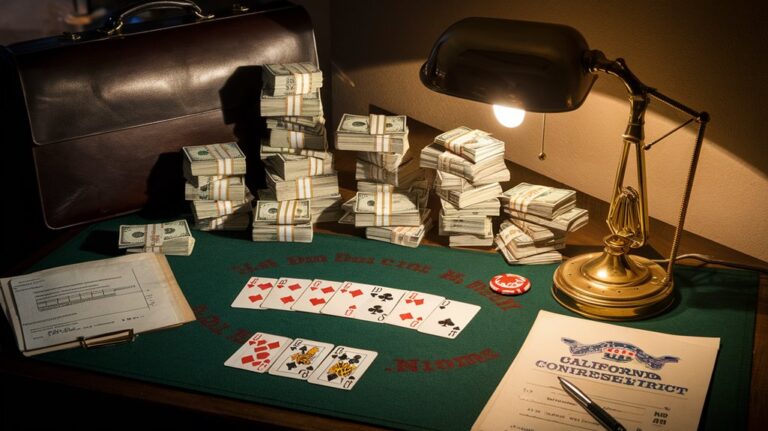The Explosive Name Behind the Molotov Cocktail
While you might assume the Molotov cocktail got its name from its inventor, you'd be surprised to learn it's actually born from wartime satire. When Soviet Foreign Minister Vyacheslav Molotov insisted his country was dropping humanitarian aid rather than bombs on Finland, the Finns responded with biting wit. They dubbed their improvised firebombs "Molotov cocktails"—the perfect drink to go with Molotov's "bread baskets." This dark humor would soon spread worldwide and transform into a lasting symbol of resistance.
The Finnish-Soviet Winter War: Birth of a Name

While the Soviet Union launched its invasion of Finland in November 1939, they didn't expect their smaller neighbor's fierce resistance or clever propaganda response.
When Soviet Foreign Minister Vyacheslav Molotov claimed his nation's bombs were "humanitarian aid" for "starving" Finns, Finnish tactics turned this propaganda into biting satire. They mockingly dubbed Soviet incendiary devices "Molotov bread baskets" and named their homemade firebombs "Molotov cocktails" as a sardonic accompaniment. The Finnish forces proved remarkably effective with these improvised weapons, managing to destroy 80 Soviet tanks in early confrontations. The Alko corporation began mass production efforts, manufacturing over 542,000 bottles by spring 1940.
Despite Soviet strategies calling for a quick three-week victory with 450,000 troops, Finland's determined defense inflicted heavy casualties and held the Mannerheim Line for months.
Though Finland eventually ceded 11% of its territory in the peace settlement, their creative resistance gave birth to a weapon name that would become legendary in future conflicts worldwide.
Vyacheslav Molotov's Unintended Legacy
Despite being a powerful Soviet statesman who helped shape 20th-century politics, Vyacheslav Molotov's most enduring legacy came from an unexpected source – the makeshift weapon that mockingly bore his name.
As Minister of Foreign Affairs in 1939, he orchestrated crucial diplomatic relations between the Soviet Union and Nazi Germany. While Molotov's ideology centered on unwavering support for Stalin's vision and aggressive political maneuvering, his name lives on through a weapon he never intended to be associated with.
The Finnish forces sarcastically named these improvised weapons after him when he falsely claimed that Soviet planes dropped bread to starving Finns instead of bombs.
Here's what makes his legacy particularly ironic:
- Served as Stalin's right-hand man for decades
- Implemented brutal policies like forced collectivization
- Signed the infamous Nazi-Soviet pact of 1939
- Faced exile after opposing Khrushchev's reforms
- Defended Stalinist policies until his death in 1986
You'll find it fascinating that despite his significant role in Soviet politics, Molotov is best remembered for a weapon named by his Finnish adversaries rather than his political achievements.
From Bread Baskets to Battle Weapons
The birth of the Molotov cocktail springs from a darkly humorous moment in military history. When Soviet Foreign Minister Vyacheslav Molotov claimed his planes were dropping food rather than bombs on Finland, the Finns responded with biting sarcasm that would shape the historical context of this improvised weapon forever.
You'll find the cultural significance of the name stems from Finnish resilience – they dubbed Soviet bombs "Molotov's bread baskets" and created their own "cocktails" as a sardonic drink pairing. A widespread effort to create these low-tech weapons emerged due to limited military resources.
The Rajamäki distillery transformed this jest into a serious defensive weapon, producing 540,000 standardized Molotov cocktails filled with a precise mixture of gasoline, ethanol, and tar. Francisco Franco's forces first demonstrated their effectiveness against Soviet tanks during the Spanish Civil War.
What began as a mocking response to Soviet propaganda evolved into a globally recognized symbol of resistance that's still relevant in modern conflicts.
A Symbol of Resistance Through History
Throughout history, Molotov cocktails have emerged as powerful symbols of resistance against overwhelming odds. You'll find this improvised weapon at the heart of numerous resistance movements, from the Finnish Winter War to the Hungarian Revolution of 1956. During World War II, these weapons earned their name after Soviet minister Molotov falsely claimed bombing raids on Finland were humanitarian aid drops. The first documented use of these weapons occurred when Spanish nationalists deployed them in 1936.
Its cultural symbolism transcends borders, representing the determination of underdogs fighting against oppressive forces.
- Finns used them to destroy Soviet tanks during the Winter War
- Hungarian revolutionaries employed them effectively against Soviet forces
- Protesters worldwide have adopted them as symbols of civil uprising
- Their presence in media, from films to video games, reflects their iconic status
- They've become internationally recognized as tools of resistance
The weapon's effectiveness, combined with its simple construction, has made it a lasting symbol of civilian resistance against superior military forces.
This has captured public attention and communicated defiance without escalating to full-scale warfare.
Global Impact and Modern Applications

Modern conflicts continue to demonstrate the enduring impact of Molotov cocktails in asymmetric warfare. While they can't penetrate today's advanced tank armor, you'll find these improvised weapons remain effective in urban warfare scenarios by targeting sensitive equipment and blinding sensors.
These makeshift weapons earned their name during the Winter War when Finnish soldiers mocked Soviet Foreign Minister Vyacheslav Molotov's claims about humanitarian aid.
The gasoline used in these weapons provides 36 times more energy than modern lithium-ion batteries, making them remarkably potent.
You'll see their psychological tactics at work when tank crews retreat from the smoke and perceived threat, even if the physical damage is minimal.
From the Hungarian Revolution, where fighters destroyed hundreds of Soviet tanks, to recent conflicts in Ukraine, these weapons have maintained their strategic value. Their ease of production and readily available materials make them particularly useful for irregular forces.
As conflicts evolve, Molotov cocktails continue to serve as both practical tools and powerful symbols of resistance against superior forces.










